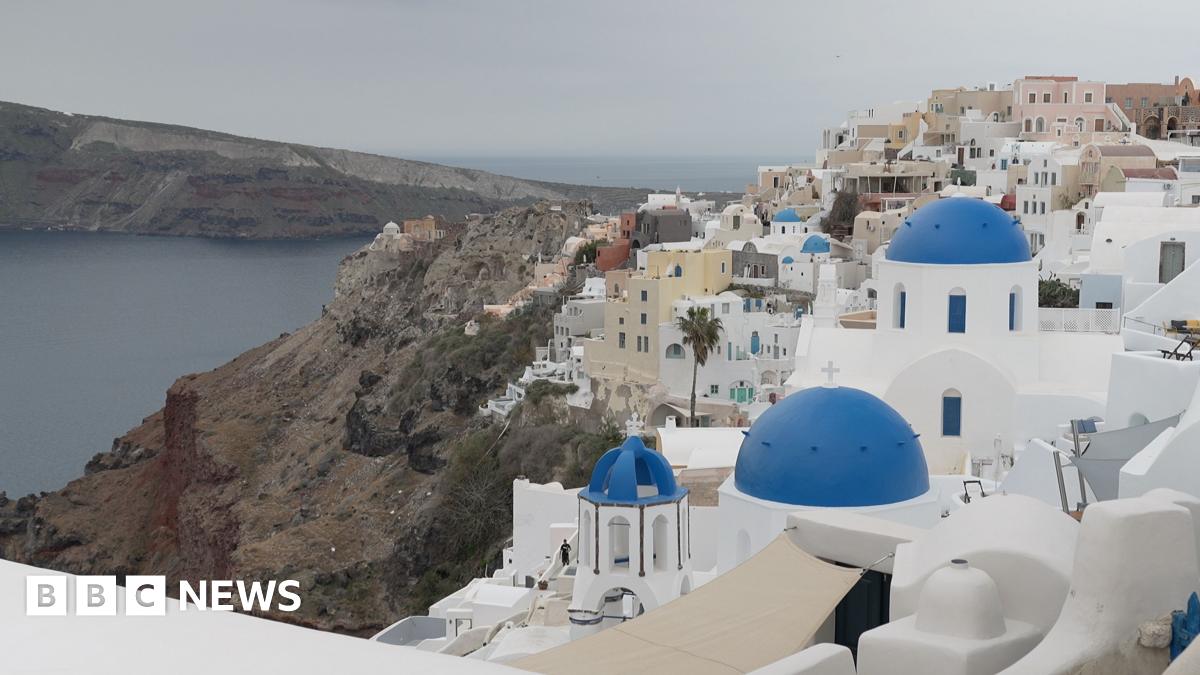Santorini's Volcanic Past: Predicting The Next Big Explosion

Welcome to your ultimate source for breaking news, trending updates, and in-depth stories from around the world. Whether it's politics, technology, entertainment, sports, or lifestyle, we bring you real-time updates that keep you informed and ahead of the curve.
Our team works tirelessly to ensure you never miss a moment. From the latest developments in global events to the most talked-about topics on social media, our news platform is designed to deliver accurate and timely information, all in one place.
Stay in the know and join thousands of readers who trust us for reliable, up-to-date content. Explore our expertly curated articles and dive deeper into the stories that matter to you. Visit Best Website now and be part of the conversation. Don't miss out on the headlines that shape our world!
Table of Contents
Santorini's Volcanic Past: Predicting the Next Big Explosion
Santorini, the breathtaking Greek island famed for its whitewashed villages clinging to volcanic cliffs and stunning sunsets, hides a turbulent past. Its iconic caldera, a vast, submerged crater, is a stark reminder of a cataclysmic eruption thousands of years ago that reshaped the Aegean Sea and may hold clues to its future. Scientists are now grappling with a crucial question: when might Santorini erupt again? And what will the consequences be?
A History Forged in Fire
The Minoan eruption, approximately 3,600 years ago, is considered one of the largest volcanic events in human history. Its impact was global, causing climate change and potentially contributing to the decline of the Minoan civilization on Crete. The eruption ejected an estimated 60 cubic kilometers of volcanic material, creating the caldera we see today. This wasn't a one-off event; Santorini has a long and complex volcanic history, with evidence of numerous eruptions over hundreds of thousands of years. Understanding this history is key to predicting future activity.
Monitoring the Volcano: A Delicate Balance
Today, Santorini is closely monitored by scientists using a range of sophisticated techniques. These include:
- Seismic monitoring: Detecting subtle tremors and changes in ground deformation that can indicate magma movement beneath the surface.
- Gas emissions analysis: Measuring the release of gases like sulfur dioxide, which can be an indicator of rising magma.
- GPS measurements: Tracking changes in the shape and elevation of the island, providing insights into subsurface pressure changes.
- Geochemical analysis: Studying the composition of volcanic rocks and gases to understand the volcano's evolution and potential future behavior.
These monitoring efforts provide valuable data, but predicting volcanic eruptions remains a significant challenge. While scientists can identify signs of increased activity, pinpointing the exact time and magnitude of a future eruption remains elusive. The complexities of magma movement, pressure buildup, and the interplay of various geological factors make precise forecasting difficult.
The Potential Impact of a Future Eruption
The consequences of another large eruption in Santorini would be severe. The immediate impact would likely include:
- Pyroclastic flows: Fast-moving currents of hot gas and volcanic debris, devastating to anything in their path.
- Ashfall: Widespread ashfall could disrupt air travel, damage infrastructure, and contaminate water supplies across a wide area.
- Tsunamis: A large eruption could trigger a tsunami, impacting coastal communities in the Aegean Sea and potentially beyond.
The scale of any future eruption is uncertain, ranging from a relatively small event to another catastrophic explosion similar to the Minoan eruption. However, even a smaller eruption could have significant local consequences.
Living with a Volcano: Mitigation and Preparedness
Given Santorini's volcanic nature, effective mitigation and preparedness strategies are crucial. This involves:
- Continued scientific monitoring: Investing in advanced monitoring systems to provide early warning of increased volcanic activity.
- Evacuation plans: Developing and regularly testing robust evacuation plans for residents and tourists.
- Public education: Educating the public about volcanic hazards and safety procedures.
- Infrastructure improvements: Designing and building infrastructure that is more resilient to volcanic hazards.
Santorini’s stunning beauty is inextricably linked to its volcanic origins. By understanding its past and continuously monitoring its present, scientists and local authorities can work together to minimize the risks and ensure the safety of this remarkable island and its inhabitants. The future remains uncertain, but ongoing research and preparedness are vital steps in mitigating the potential dangers of Santorini’s volcanic heart. Staying informed about volcanic activity through reputable scientific sources is crucial for anyone planning a visit or residing on the island.

Thank you for visiting our website, your trusted source for the latest updates and in-depth coverage on Santorini's Volcanic Past: Predicting The Next Big Explosion. We're committed to keeping you informed with timely and accurate information to meet your curiosity and needs.
If you have any questions, suggestions, or feedback, we'd love to hear from you. Your insights are valuable to us and help us improve to serve you better. Feel free to reach out through our contact page.
Don't forget to bookmark our website and check back regularly for the latest headlines and trending topics. See you next time, and thank you for being part of our growing community!
Featured Posts
-
 Increased Safety Measures Prison Staff Seek Stun Guns In High Risk Facilities
Apr 22, 2025
Increased Safety Measures Prison Staff Seek Stun Guns In High Risk Facilities
Apr 22, 2025 -
 Improving Mens Health Tackling The Issue Of Infrequent Gp Visits
Apr 22, 2025
Improving Mens Health Tackling The Issue Of Infrequent Gp Visits
Apr 22, 2025 -
 Uk Flight Delays 2024 Gatwick Remains The Worst Performer
Apr 22, 2025
Uk Flight Delays 2024 Gatwick Remains The Worst Performer
Apr 22, 2025 -
 Nonsense And Lies Milibands Sharp Rebuke Of Net Zero Doubters
Apr 22, 2025
Nonsense And Lies Milibands Sharp Rebuke Of Net Zero Doubters
Apr 22, 2025 -
 Linas Tragic Death Examining The Accuracy Of Police Risk Assessment Algorithms
Apr 22, 2025
Linas Tragic Death Examining The Accuracy Of Police Risk Assessment Algorithms
Apr 22, 2025
